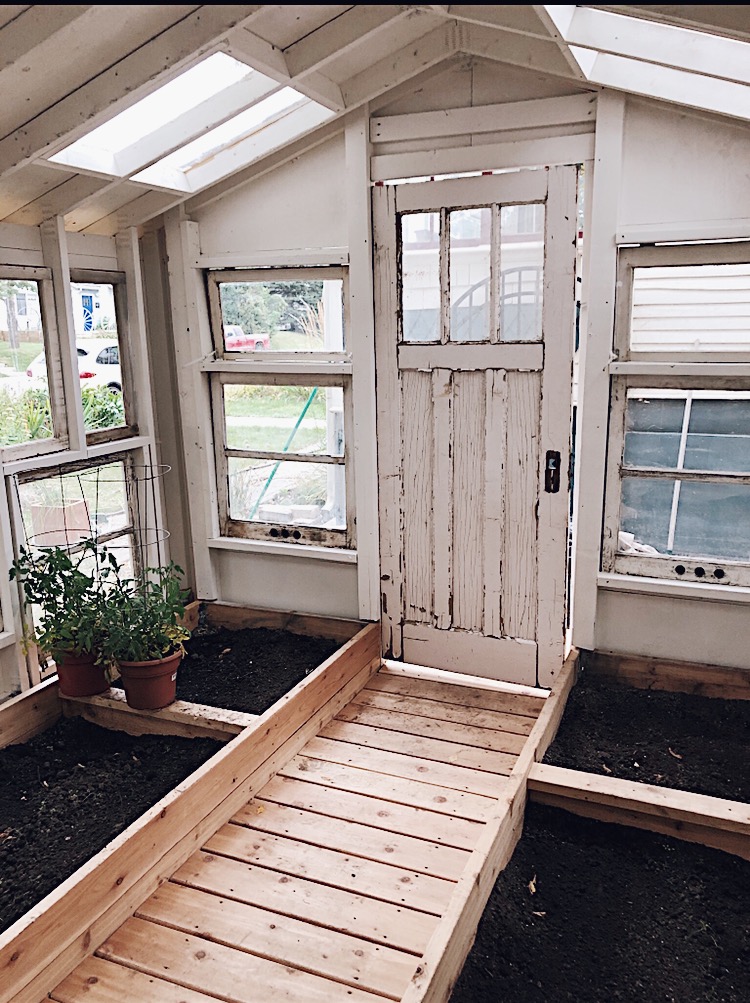If you follow my Isola Herbals social media accounts, you may have seen that I was very fortunate to have my dream greenhouse built for me this past fall. My talented husband took a list of everything I wanted for the space, and made it a tangible reality.
The space where we built the little glass house was an unused portion of the property, where a tall fence hindered the growth of the south-facing gardens. The lawn sat burned by the sun on one side, and drowned by darkness on the other. He took down the fence, and levelled the ground where the happy garden home would sit in between a beautiful old larch tree and a pretty gnarled maple. He even worked under all of the trees branches without cutting them so that the greenhouse would have some natural shade and my ancient trees wouldn’t be disturbed.
The house design came from the dimensions of the windows. The farmhouse door and the windows were all that remained from a torn-down victorian farmhouse in central Alberta. Being over 100 years old, the windows and the door do not have modern conventional measurements, so the greenhouse had to be custom built for them.
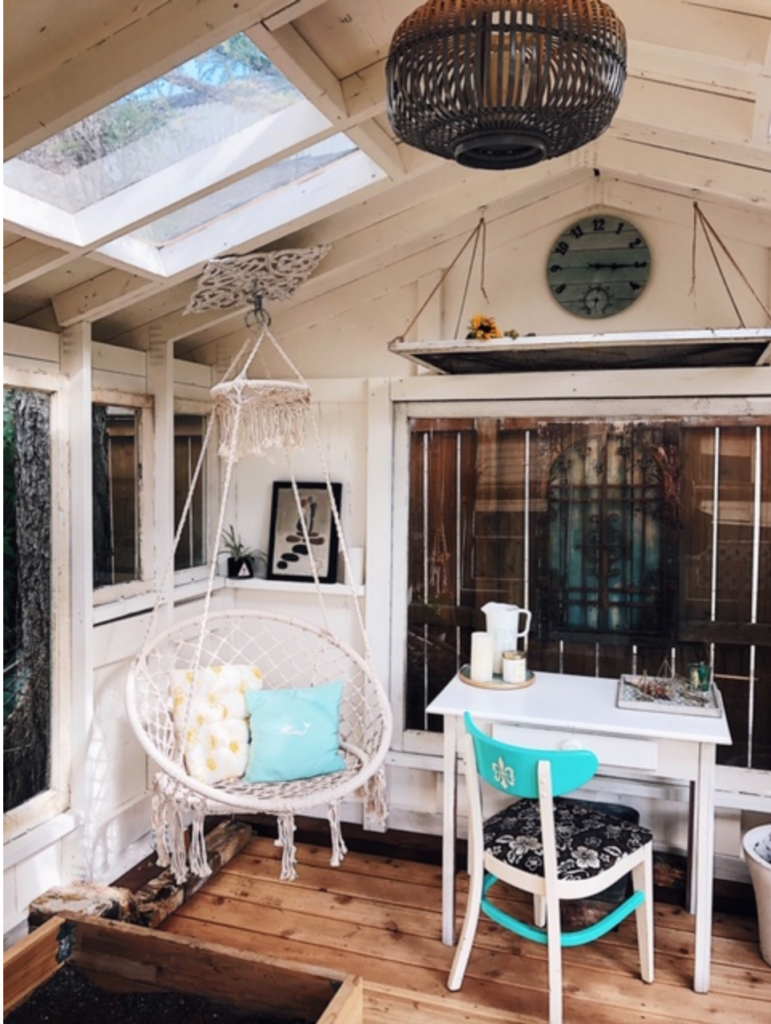
I wanted to have an ‘office’ space in the house. As an herbalist, I’ve learned that as much paperwork goes into properly managing a garden of medicine as actually tending to that garden. For this, Marc built a hearty cedar floor at the back (and shaded) part of the structure where I could put shelves for books, seeds, planters and tools. I brought in a small antique refurbished writing desk and chair, and even had the space to add a hanging macrame chair for resting and dreaming. He put solid walls on both sides of the back window so that I could hang planting calendars, growing charts and easily keep records of my work.
There are four beds which we filled with organic soil mixed with some of the rich dark soil from the property. Rather than using a perlite to allow for aeration in the soil, I used coconut husk as it is organic and untreated by heat. As I grow medicinal herbs for skincare and haircare oils, it is important to me that in every step of the way, the ingredients are allowed to grow naturally and organically.
Having four separate beds allows for me to plant invasive herbs directly into the soil without worry that they will travel into other beds through their root system, and it will also allow me to have different pH balances of each of the beds, so that I can cater to the needs of different herbs and flowers.
As you can see in the photos below, one side of the greenhouse will see a high amount of sunlight, and the other (north side) will see a low amount of sunlight. Again, this ensures that I will be able to plant a variety of herbs and adhere to their individual needs.
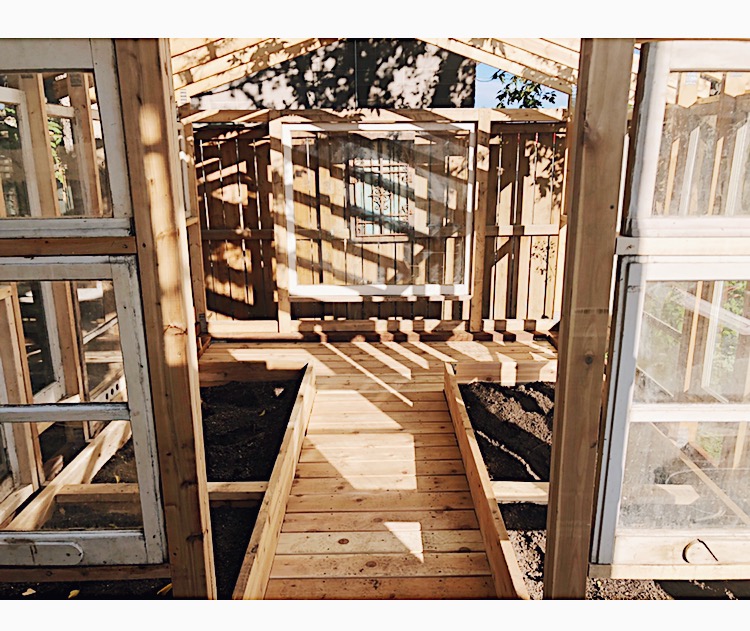
As I live in Alberta, Canada, there are perennial plants that simply don’t have a long enough growing season to product fruits or flowers. Those tend to be my most desired plants, so I’ve moved a couple of my favourites into the greenhouse to lengthen their growing season. One of my little prizes is a pretty white table grapevine, which will be three years old this year and therefore should be in a fruit-producing capacity. I’ve moved it to the front south side of the greenhouse, and planted its best companion, a coral rosebush beside it. Should my little grapevine catch an illness, the rosebush will let me know on its own leaves, so I can treat them both without allowing the illness to take over either plant.
Just before the winter came, I planted hardneck garlic along the south wall of the second bed in the greenhouse. While garlic is hearty and grows well in Alberta, I have many squirrel friends who have enjoyed every bit of garlic I’ve grown outdoors in the last five years. Perhaps I’ll share some of this years growth with them, but for once, I’d like to keep some of it for myself!
-
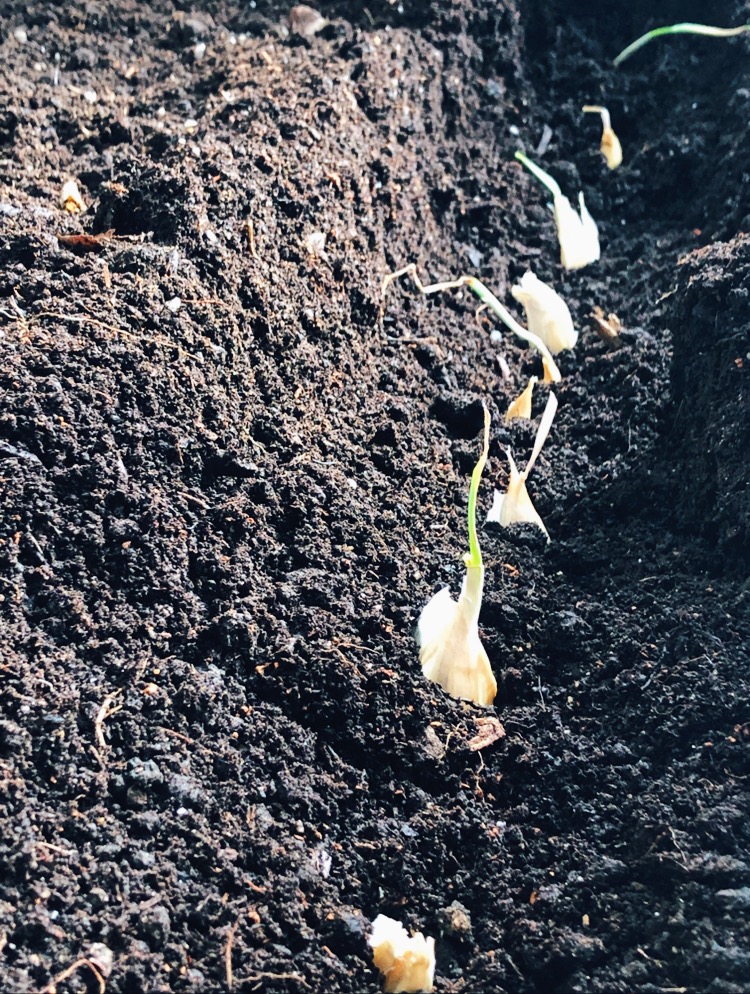
Greenhouse garlic planted in the fall. -
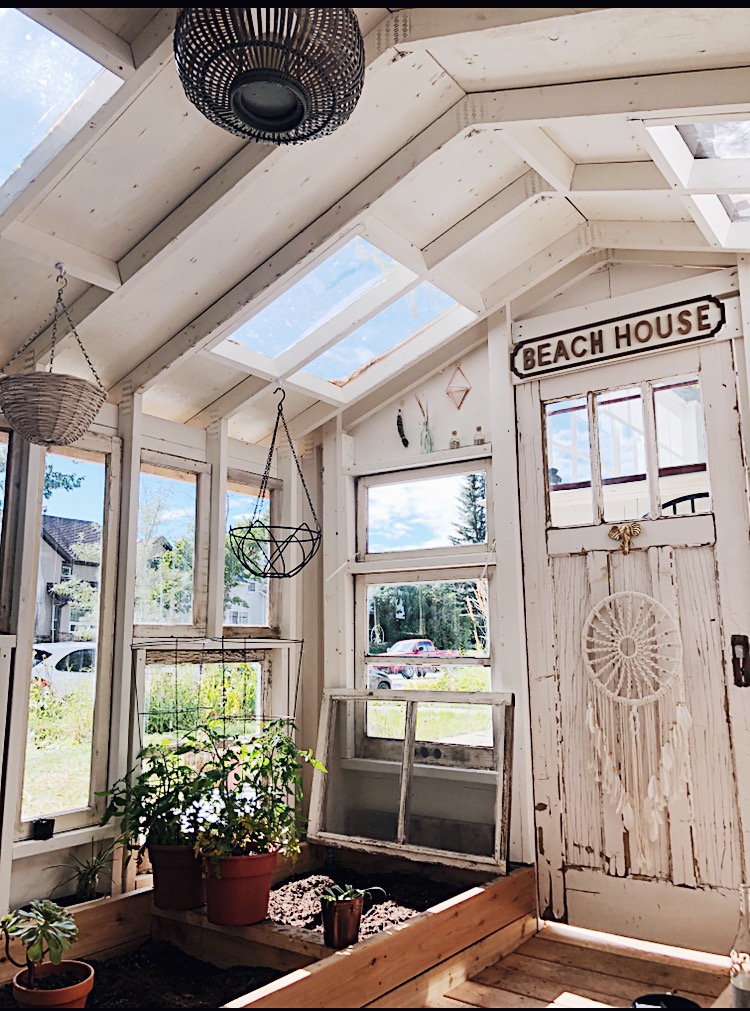
Every girl should have a beach house, even if she’s nowhere near the ocean.
The Victorian windows in the front of the greenhouse have little hinges on them to that a natural circulation can occur, and all of the windows have traditional early 1900’s air vents which can be left open or closed for further air movement.
Stay tuned for Part II where I’ll share what I’ve learned about traditional herbs of the Victorian era, and our building plans and inspiration for my unique little dream house!

In the spring I’ll hang flowering planters all along the rafters.

